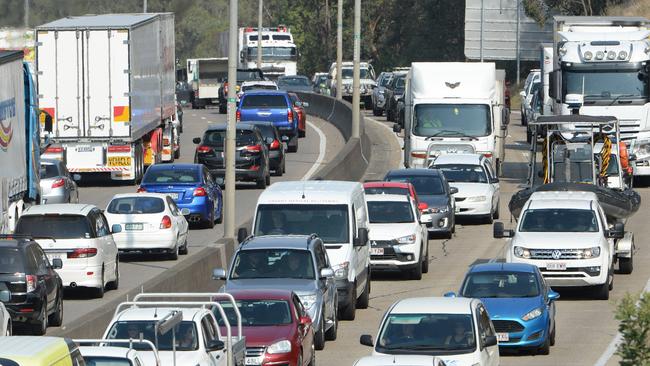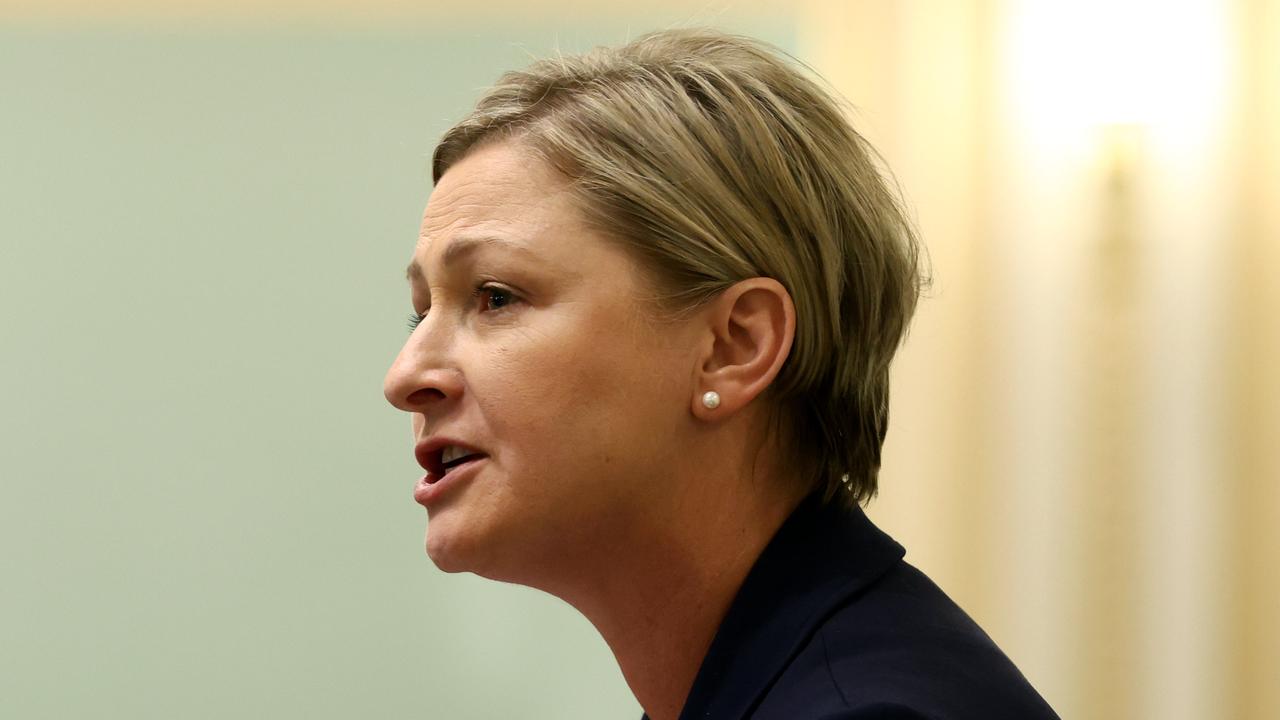SEQ’s most congested roads revealed amid push for long-term transport plan
Motorists are spending almost 30 extra hours stuck in traffic, sparking urgent calls for a long-term transport plan amid fears congestion will worsen in the lead-up to the 2032 Olympics.

QLD News
Don't miss out on the headlines from QLD News. Followed categories will be added to My News.
South East Queensland’s traffic congestion is getting steadily worse, a new report reveals, with peak hour speeds on major roads slowing by up to 39 per cent since 2019 and commuters crawling along at snail paces as low as 17.5km/h.
Average rush hour speeds on the region’s busiest corridors are also up to 63km/h cent slower than at free-flowing times, according to the RACQ’s latest Travel Speeds Report.
The motoring body says some motorists are now spending almost 30 hours extra in traffic in a working year.
The grim trend has sparked urgent calls for a long-term transport plan amid fears congestion will continue to worsen in the lead-up to the 2032 Olympics when the eyes of the world will be on us.
The RACQ reported that average morning peak hour speeds were slower on 65 out of 98 major road sections across Brisbane than they were five years ago, while 67 had slower afternoon peak speeds.
Logan Road (Padstow Rd to Kessels Rd section) was the worst on the inbound morning peak hour run, with average speeds slowing from 31km/h in 2019 to just 20km/h last year.
In the afternoon peak, Sandgate Rd (Braun St/Roghan Rd to Depot Rd), average speeds plummeted 38.6 per cent from 44km/h in 2019 to 27km/h last year.
On the Centenary Motorway (Ipswich Motorway to Dandenong Rd), morning peak-hour traffic crawled along at an average of 31.7km an hour – 63km/h slower than at free-flowing times.
The Pacific Motorway (North Quay to O’Keefe St) was the most congested outbound, with traffic slowing to an average of 28km/h.
The Nielsens Rd to Nerang River stretch of the Pacific Motorway at Carrara on the Gold Coast recorded the biggest differential in the afternoon peak, with the 40.7km/h average speed 48.9km/h slower than at free-flow times.
Morning peak hour congestion added almost seven minutes to the drive from Ipswich Motorway to Fig Tree Pocket Road on the Centenary Motorway in 2024, averaging just 35.9km/h.
That equated to motorists spending more than 28 hours extra in traffic over a working year, according to the RACQ.
RACQ head of public policy Michael Kane said a long-term South East Queensland transport policy was desperately needed to tackle chronic congestion.
Dr Kane said there were critical gaps in the southeast’s ring road of motorways that were funnelling too much traffic into the CBD.
“This is putting great stress on congestion, hampering productivity and SEQ’s enviable lifestyle,” he said.
“Governments must seriously consider delivering a Centenary Motorway upgrade from the Ipswich Motorway to Legacy Way (Toowong) and planning a new northwest corridor linking the Centenary Motorway with the Bruce Highway to keep through-traffic off our local roads.
“There has also been $1 billion set aside for Gateway North Motorway upgrades since 2019, where motorists last year faced an average delay of three and a half minutes during the afternoon peak while travelling from Deagon Deviation to Pine Rivers Bridge.
“We need to get on with that work, including the proposed Bruce Highway upgrades from Pine Rivers Bridge to Anzac Avenue.”
Dr Kane said “urgent planning and solutions” were needed for badly-congested Gympie Rd. He also called for expanded Brisbane Metro services, certainty over Brisbane Airport connections and more cycle paths.
“Our research shows that many Queenslanders are looking forward to the 2032 Games, but many more will follow if they can see tangible legacy benefits, particularly improved transport infrastructure to cater for a growing population,” Dr Kane said.
Originally published as SEQ’s most congested roads revealed amid push for long-term transport plan



